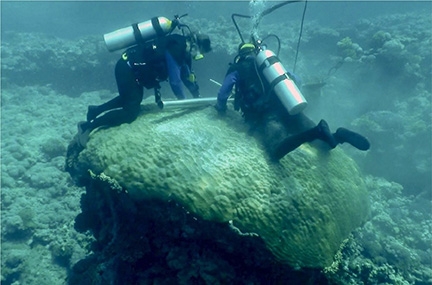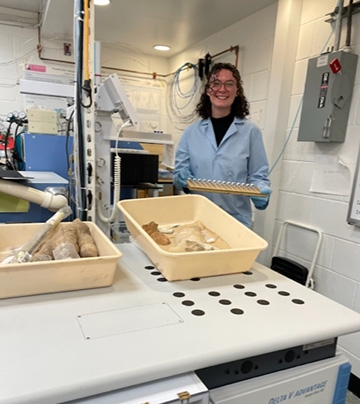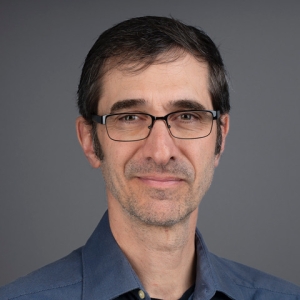$137,890; NSF Paleo Perspectives on Present and Projected Climate (P4CLIMATE) - Marine Geology and Geophysics (MG&G)
Spatio-temporal changes in Red Sea surface hydrology and controls on deep ocean circulation since the 1700s
Principal Investigator: David Gillikin, William D. Williams Professor and Chair of Geosciences
Oceans play a critical role in regional and global climates through their interaction with the atmosphere, as well as through the redistribution of heat between surface and deep waters. There is currently a limited understanding of the past changes in spatio-temporal patterns of variability and circulation within the Indian Ocean and its connected marginal seas, including the Red Sea, and how these changes have impacted the climate and can be used to predict future changes in the climate across the broader Mediterranean and Middle east regions. This project will fill this knowledge gap by developing a record of long-term trends in the hydrology of the Indian Ocean and its connected marginal seas.
Through this research, four records of past climate and ocean changes using corals from across the eastern edge of the Red Sea will be developed. Chemical analyses of the cores will be compared with existing instrumental data to generate records of temperature, salinity and density that extend back 200-400 years. Hydroclimate parameters will first be reconstructed from Red Sea coral geochemical records to provide quantitative and independent evaluations of sea surface temperature (SST) and sea surface salinity (SSS) variability across the northern and central Red Sea and assessments of interannual to multi-decadal variability during the summer and winter seasons. Red Sea SSS and density variability, its drivers, and relation to regional climate variability will then be assessed to provide: quantification of the surface expression of Red Sea Overflow Water (RSOW) formation in the northernmost Red Sea; assessment of the linkages between SSS variability in the broader Red Sea and preconditioned salinity anomalies in the far north; and an understanding of the relationship between Red Sea circulation and relevant climate systems including the Arctic Oscillation (AO) and North Atlantic Oscillation (NAO). These climate and ocean records will provide insight into how Red Sea circulation patterns change across space and time in response to climate systems.
Collaborating institutions include Union College, the State University of New York at Albany, and Woods Hole Oceanographic Institution (WHOI). This collaborative project will contribute to the development of the next generation of scientists. Several undergraduate and graduate students will receive mentoring and training, as well as hands-on research opportunities, in the geochemical analysis of coral, marine geochemistry, and paleoclimate.


